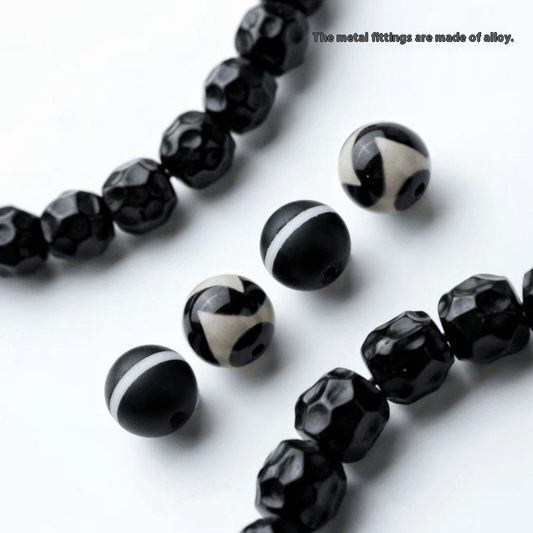
Within the refined texture inside Tibetan faith systems appear two valuable masterpieces: the artistic thangka and spiritual bodhi gem. Every single one, in individualized approach, enables transcendental awakening. The thangka, a vibrant painting, depicts deities, mandalas, or scenes from Buddhist lore, acting as a visual aid for meditation.
Conversely, the bodhi bead, often crafted from noble stones, bark, kernels, or hard tissue, is a tangible reminder of Buddha's liberation under the bodhi tree. Holding these beads during prayer or meditation helps to focus the mind.
- In unison, the thangka and the bodhi bead represent the interconnectedness of art and spirituality. They offer a tangible link to the age-old knowledge of Tibetan Buddhism.
Tales Whispered by Camel Bone
Across the sands of time, ages-old treasures whisper tales of a world long vanished. These are not embellished objects in shadowed empires, but simple camel bones engraved with characters that safeguard the riddles of a bygone cycle. Every fragment whispers the echo in a life lived, a journey navigated, and a connection to the timeless wisdom that embraces us all.
- Those
- Tokens
- Provide
Revealing the Hidden Language of Thangka Paintings
Tangkas are captivating paintings on canvas, meticulously crafted by Tibetan artists to depict divine figures and scenes from Buddhist literature. Each detail within a thangka is laden with significance, forming a complex tapestry of visual narratives that guide the viewer on a introspective journey. The colors used in thangkas are not merely aesthetic choices but carry core connotations, standing for different aspects of the Buddhist practice. From the calm figures to the intricate decorations, thangkas offer a outlook into the rich world of Tibetan Buddhism, inviting us to ponder upon its understanding.
- Time-honored thangka art often depicts key Buddhist figures such as Buddha Shakyamuni, Bodhisattvas like Avalokiteshvara and Manjushri, and enlightened beings from various lineages of Tibetan Buddhism.
- Inside these representations lies a wealth of insight that can be decoded by those who engage the symbolic language of thangkas.
The Buddha's Path to Enlightenment: Embodied in Beads and Bone
Upon the winding track to illumination, the Buddha harnessed symbols imbued with profound weight. These bead and bone held within them the core of his philosophy, revealing glimpses into the form of reality. Alongside their appearance, the Buddha transmitted profound insights that go beyond the realm of mundane perception.
From such contemplative beads, crafted from unique materials, arose vibrations that aligned with the deepest forces within. The composition of a individual, meticulously transformed into relics, served as tangible reminders of the impermanence constitutional to all existence.
Thangkas: Windows into Himalayan Spirituality
Thangkas luminous paintings on cloth serve as effective representations of Himalayan spirituality. These intricate works of art, meticulously created with exquisite brushstrokes, depict a vast array in Buddhist deities, mandalas, and scenes from ancient scriptures. Each thangka is a contemplative aid for meditation and contemplation, offering discernment into the intricate teachings of Buddhism.
- They are often used in ritual ceremonies within
- inducing states of spiritual awakening.
- Thangkas serve as not merely decorative pieces but rather doorways into the rich and captivating world of Himalayan spiritual traditions.
The Allure of Bodhi Beads: Exploring Mindfulness and Compassion
Each pearl on a bodhi bead mala whispers tales of ancient wisdom, guiding us on a passage through the tranquil waters of mindfulness. As we grasp these intricately made beads, our fingers trace the contours of every one, anchoring our awareness in the present moment. The gentle substance of the beads against our palms serves as a tangible reminder to draw breath, fostering a sense of equanimity.
- Every time bead that passes between our fingers, we enhance compassion, extending it first to ourselves and then outward to the world.
- Oriental wisdom teaches us that mindfulness is a skill that requires patience and perseverance.
By means of the rhythmic repetition of mantra or simply the mindful counting of the beads, we liberate from the relentless chatter of the mind.
The practice utilizing bodhi beads is a subtle invitation to rekindle our connection with ourselves and the world around us.
Soulful Creation: Camel Bone Bracelets Enhancing Spiritual Progress
Purpose functions as an influential power in our lives, shaping our experiences and guiding us towards our destined path. When we combine this intention with the time-honored techniques of crafting a camel bone bracelet, we create a potent synergy that can boost our spiritual growth.Camel bone embodies meaningful essence, representing strength. Its natural beauty and vintage attractiveness serve as a constant reminder of the elemental strength within each of us.As we carefully select each bone, infuse our intentions into the bracelet. With every knot or stitch, we implant our hopes, dreams, and aspirations for spiritual evolution. This act of creation becomes a meditative practice, bonding us with our inner wisdom and guiding us on a pilgrimage of understanding.- Use the bone’s natural designs to enhance symbolic resonance.
- Imagine your dreams threading through each crafted segment.
- Expose it to elements to empower its sacred presence.
Exploring Camel Bone as a Buddhist Symbol
In the rich tapestry encircling Buddhist tradition, artifacts often hold profound symbolic meaning. Across these varied objects, camel bone stands out as a singular and gripping element. Within history, this material has been applied in the crafting during various Buddhist instruments, each imbued with specific implications.
- Regarded as a symbol of resilience and strength due to the camel's ability to persist in harsh environments, camel bone often signifies spiritual fortitude.
- Furthermore, the color and texture with camel bone are believed via some to hold auspicious connotations, signifying purity and serenity.
As a result, camel bone has become a prized part of Buddhist lineage, serving as a tangible nexus to the profound teachings involved in this ancient faith.
Thangka Panels: Visual Sacred Lore
Within the ethereal realm of Tibetan Buddhism, Thangka paintings emerge as sacred portals to enlightenment. These remarkable works, meticulously crafted by skilled artists known as thangkapa, depict a myriad including vibrant deities, celestial beings, and mythical creatures. Each brushstroke imbues profound spiritual significance, narrating ancient tales and philosophical principles.
- Offering a vast library of Buddhist iconography, Thangkas serve as both devotional objects and instructional tools. Pious practitioners gaze upon these paintings during rituals and meditations, seeking to attain spiritual wisdom.
- Intricately adorned with intricate details decorated with numerous vibrant hues, Thangkas are considered windows into the divine. Each individual painting acts as a symbolic representation of the Sage's teachings and the path to liberation.
By the use of their forceful imagery and symbolism, Thangka paintings offer a glimpse into the rich mystical traditions of Tibet. They are a testament to the enduring mastery of Tibetan art and its profound ability to invigorate.
Embracing the Duality: Thangkas and the Cycle of Life and Death
Thangkas, radiant pictorial scrolls from Tibetan culture, embody a meaningful examination of life’s transience. Each intricate portrait depicts deities and beings engaged in the unfolding course of life and death, a symphony of birth, growth, impermanence, and renaissance. The artists skillfully merge these concepts within the thangka's universe, highlighting the cohesion of all things. Through vivid emblems, they invite us to speculate on our own being. The cycle returns, a pattern of coming and going, stressing the preciousness of each moment. By embracing this duality, thangkas teach us to accept the beauty in both life's joys and sorrows.Lines of Commitment: The Significance of Bracelets in Buddhist Practice
In the intricate tapestry of Buddhist practice, seemingly simple objects often hold profound meaning. Among these are bracelets, which serve as tangible emblems of devotion and commitment to the principle of Buddha. Worn on the wrist, a bracelet exists as a constant reminder of one's aspirations and aspirations. It can evoke the impermanence of life, urging practitioners to remain rooted in the present moment. Some bracelets may hold sacred etchings, such as mantras or the names of Buddhas, which are believed to channel positive energy and security. Others are commonly made from substances with spiritual significance, like sandalwood or lotus seeds, increasing the bracelet's impact. Ultimately, the significance yoga life of a Buddhist bracelet stems far beyond its physical form. It becomes a powerful tool for quietude, a motivation to live in harmony with the teachings of Buddha, and a channel of one's unwavering allegiance.